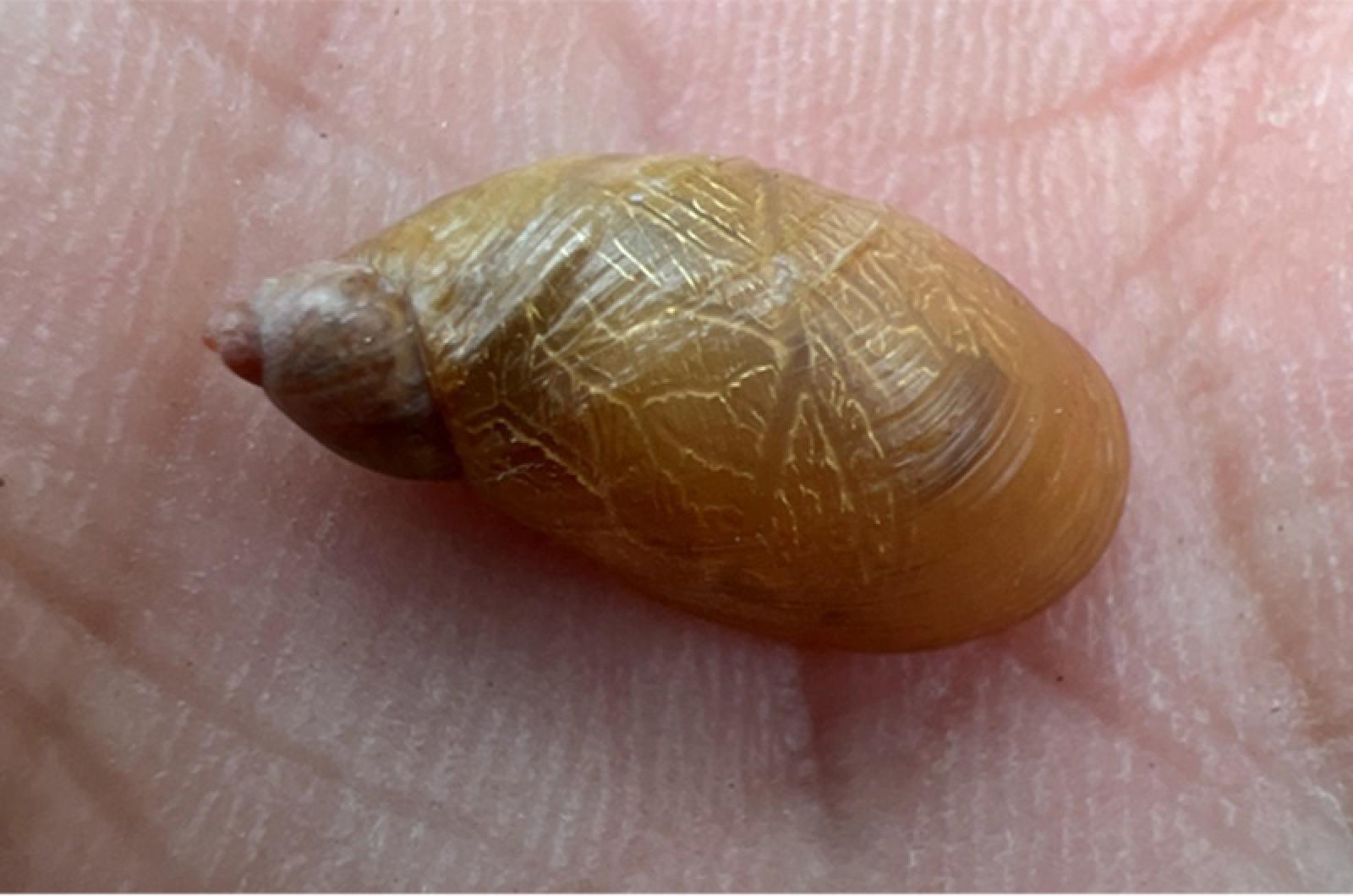David Stanwood is a man of music and, of late, mollusks.
He is a fixer and a finder with a forte for flora and fauna. While David is most known in musical circles for his piano practice, he is also noted by naturalists for his sometimes strange, but always wondrous, wildlife sightings.
Strange describes the Russian tortoise he discovered during a blizzard. And wondrous was the spangled fritillary he photographed a year later. Now he is back with a small though not insignificant snail. David discovered an amber snail nosing around on the underside of a milkweed plant.
Amber snails are terrestrial pulmonated gastropod mollusks. Yes, that is a mouthful: it means these snails live on land, breathe air though a lung and are in the scientific class gastropoda and phylum mollusca. Gastropod means stomach-footed and the class are snails as well as slugs.
The family and genus name of amber snails, succineidae and succinea respectively, were bestowed by 19th century Danish malacologist (mollusk scientist) Henrik Henriksen Beck. His nomenclature is derived from the Latin word succinum, meaning amber.
The shells of these species are delicate and thin, appearing to have golden filigree. Species is plural since snails in this genus are difficult to identify. To achieve certainty, one must dissect the creature. Neither David nor I were on a need to know basis if it meant the end of this amber snail. There are at least 20 species of amber snails in the eastern United States.
Though land lovers, these snails associate with wet habitats and are found near streams, ponds, lakes and marshes. They thrive in both wet and dry environments surprisingly well. These gill-less air breathers can survive submersion in water for 36 hours and can endure even the driest conditions by going into estivation (dormancy) for up to 10 days.
Snail gender is of great interest and in the case of amber snails, each individual is endowed with both male and female reproductive parts. In this case, they are sequential hermaphrodites. As youngsters, these snails are male and older ones serve as females since their sperm matures faster than their eggs. Both gender cells come from a single gonad, though there are two separate openings from which they emerge. In their in-between adolescent stage (and in a pinch), amber snails can self-fertilize, though usually it takes two to tango.
David might want to keep an eye on the milkweed, as that snail might have been laying its eggs. Batches of up to 30 transparent eggs will need about two weeks to hatch and then take a year to mature.
It is not surprising that David — known for his attention to detail — discovered this diminutive snail. Though he is usually tickling the ivories, this recent find had him harmonizing with nature.
Suzan Bellincampi is islands director for Felix Neck Wildlife Sanctuary in Edgartown and the Nantucket Wildlife Sanctuaries. She is also the author of Martha’s Vineyard: A Field Guide to Island Nature and The Nature of Martha’s Vineyard.







Comments
Comment policy »